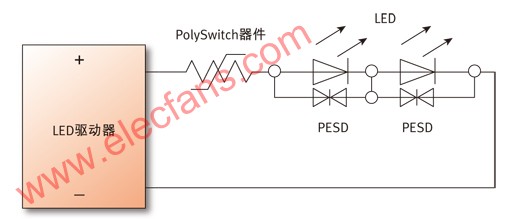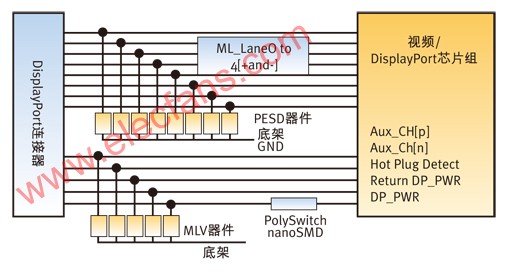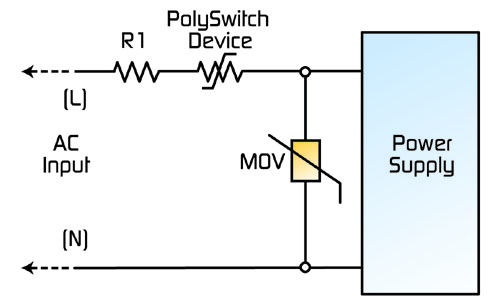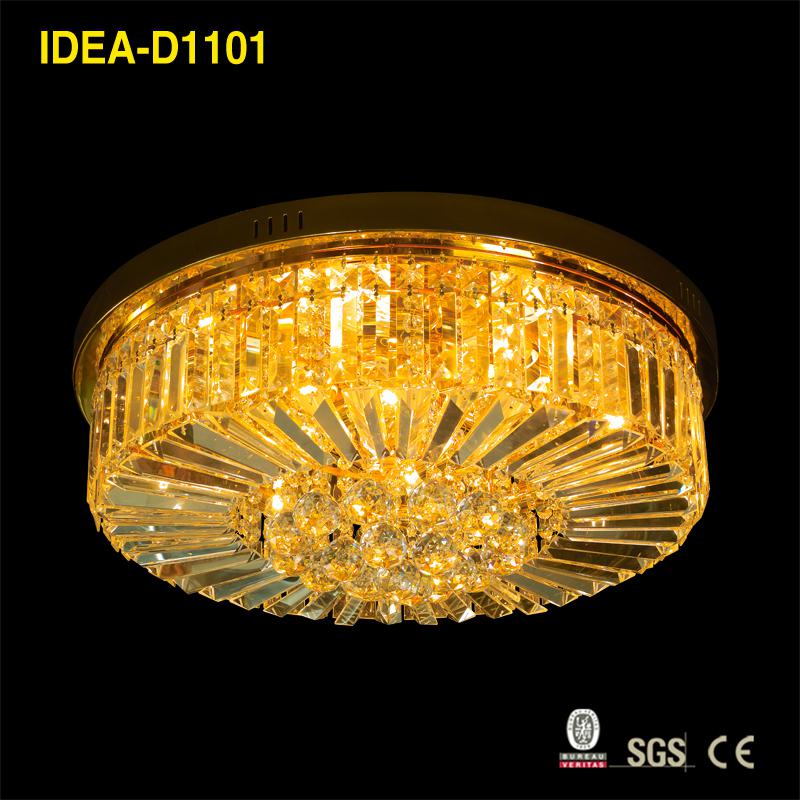There are many types of circuit protection devices that can be used to help protect the LCD display from damage caused by excessive current or voltage transients. Over-current protection can take fuses or resettable PPTC (Polymer Positive Temperature Coefficient) devices. Which option to choose depends on the design of the LCD, the type of hazards the product may be exposed to and the related safety requirements. PPTC devices are generally suitable for circuits that are subject to large inrush currents at startup. PPTC devices can withstand the impact of inrush current and save the trouble of replacing the burnt fuse. Fuses are suitable for circuit designs that do not require self-recovery capabilities, or circuits that cause overcurrent shock only in the case of system errors. When the soft start circuit is used to limit the inrush current, the fuse is also a practical solution. In order to improve the safety and reliability of the equipment, a variety of overvoltage and overcurrent protection devices can be used together as discussed in this article. Here the overvoltage protection devices include: metal oxide varistor (MOV), multilayer varistor (MLV) and electrostatic discharge (ESD) surge protection devices. LED backlight protection LED backlighting can enhance the visual experience, provide a more flexible backlight architecture, and enable a thinner display design than traditional cold cathode fluorescent lamp (CCFL) technology. Other benefits of LED backlighting include higher efficiency, lower power consumption, longer life, better durability, and stronger contrast for higher definition. LEDs require precise power and thermal management systems because most of the electrical energy supplied to LEDs is converted to heat rather than light. Without proper thermal management measures, this heat will have a negative impact on the LED life and color output. Transient voltage and surge voltage coupled from the power line will also reduce the LED life. Many LED drivers are easily damaged by incorrect DC voltage levels and polarities, and the output of the LED driver may be damaged by a short circuit. Most LED drivers for LCD TV applications include built-in safety features, such as thermal shutdown and LED open and short circuit detection. However, additional overcurrent protection devices may be needed to help protect ICs and other sensitive electronic components. PPTC devices can also be used to prevent thermal runaway. If the cooling channel of the LCD monitor is blocked, thermal runaway may occur. The PPTC device has the ability to detect and respond to over-temperature events, so if it is installed in an appropriate location, it can cut off the current when the LED without proper heat dissipation measures is working. Figure 1 shows how to connect PolySwitch PPTC devices in series with LEDs to provide overcurrent protection. In order to fully utilize the PolySwitch device, it can be thermally bonded to the metal core circuit board or LED heat sink. If the LED does not have a built-in ESD protection circuit, a PESD protection device can be connected in parallel with the LED, which helps protect the LED from damage caused by ESD surge voltage. Figure 1: Overheat protection scheme of LED backlight I / O port overcurrent and overvoltage protection I / O port protection helps protect components from damage caused by short circuits, improve reliability, and protect customer safety. To meet the requirements of regulatory agencies, I / O ports must provide a method to shut down or limit current in the event of an overload or short circuit. As data rates increase and circuits become smaller and more sensitive, it becomes more important to protect equipment from damage caused by circuit transient voltages. The HDMI, USB, and DisplayPort specifications require that live connectors accessible to end users must have overcurrent protection. The overcurrent protection device must be able to recover automatically without manual intervention by the user, and its preset trigger threshold must be higher than the allowed transient current to prevent false protection actions. PPTC devices have proven their effectiveness in various high-speed interface applications. Like traditional fuses, they can also limit current after a specified threshold is exceeded. But unlike fuses, PPTC devices have self-recovery capabilities after fault clearing and re-powering. The low impedance, fast response time and small form factor of PPTC devices have made it the preferred method for overcurrent protection in many bus-powered architecture applications. Live ports are also vulnerable to overvoltage transients including ESD pulses. Figure 2 shows a typical circuit protection design using PolySwitch devices for overcurrent protection. The PESD device and varistor used in the circuit help protect the port from damage caused by overvoltage. MLV devices provide low capacitance parallel protection, high current handling and energy absorption overvoltage protection required in LCD TV applications. The PESD array is installed on the data line to help divert ESD from circuits sensitive to static electricity. The low capacitance of the PESD device helps prevent the degradation of high data rate signals. Multi-output power protection Switched mode power supplies (SMPS) provide the volume, weight, and energy-saving advantages required by consumer electronics, and continue to replace linear regulators in many applications, including LCD TV displays. However, because SMPS lacks the inherent impedance in previous designs, they often require more reliable circuit protection. PPTC overcurrent protection devices can help manufacturers meet the UL60950-1 / LPS (Limited Power Supply) requirements for SMPS, and help improve the safety and reliability of equipment. Under normal operating current, PPTC devices have very low resistance values. Under overcurrent conditions, the PPTC device "jumps" into a high-impedance state. The increased resistance helps protect the equipment in the circuit by reducing the value of current that may flow under fault conditions to a low steady state level. Until the fault is cleared, the PPTC device will always be locked in a high impedance state. Once re-powered, the PPTC device will reset itself and allow current to flow, allowing the circuit to resume normal operation. Although PPTC devices cannot prevent faults from occurring, they can react quickly to limit current to a safe level, thereby helping prevent faults from damaging downstream devices. In addition, the small form factor of PPTC devices makes them easy to use in space-constrained applications. Figure 3: Typical circuit protection design for switch mode power supplies As shown in Figure 3, PolySwitch devices can be used in series with the power input to help protect the components in the system from damage caused by short circuits, circuit overload, or customer misoperation. In addition, the MOV device installed on the input end helps provide overvoltage protection for the LED module. PolySwitch devices can also be placed after the MOV. Many equipment manufacturers prefer to use protection circuits that combine resettable PPTC devices with upstream fail-safe protection. In the example of Figure 3, R1 is a ballast resistor used in combination with a protection circuit. There are many standards for LCD-TV interface fault protection on the market, and each standard meets different fault protection requirements. It is always wise to keep the protection device as close as possible to the I / O and Vcc pins of the chipset, because circuit board traces are easily affected by conducted transient signals. Good grounding measures coupled with reliable circuit protection devices can enhance the transient voltage or current protection effect, help reduce the repair rate and repair cost, and simplify the work required to meet the corresponding standards. Author: Matt Williams Global Application Engineering Manager Tyco Electronics Raychem Circuit Protection Products Division
Classical Crystal Ceiling Light is a kind of embedded ceiling light with Metal and crystal for main material . Ceiling Lights
can be mounted directly on the ceiling, easy to install, simple and
generous style, giving the space clear and bright feeling. Ceiling light to the
diversification of development, both to absorb the chandelier luxury and
style, but also with a ceiling-style installation, to avoid the shorter
room can not install large luxury lighting defects. These type light used E14/E27/E12/B22 lamp holder. There are many different patterns and designs for customer to choose. We can make light according to customers' requirments.
Classical Crystal Ceiling Light Crystal Ceiling Light ,Ceiling Lamp,Ceiling Lights,Crystal Ceiling Chandelier Zhongshan Laidi Lighting Co.,LTD , http://www.idealightgroup.com

Figure 2: Typical DisplayPort circuit protection design using MLV devices, PESD suppressors, and PolySwitch overcurrent protection devices 

LCD backlight, I / O port and power protection circuit design
As the screens of LCD TVs become larger and brighter, they require more operating voltages and operating currents, and the need for more stable and reliable circuit protection technologies is more urgent.